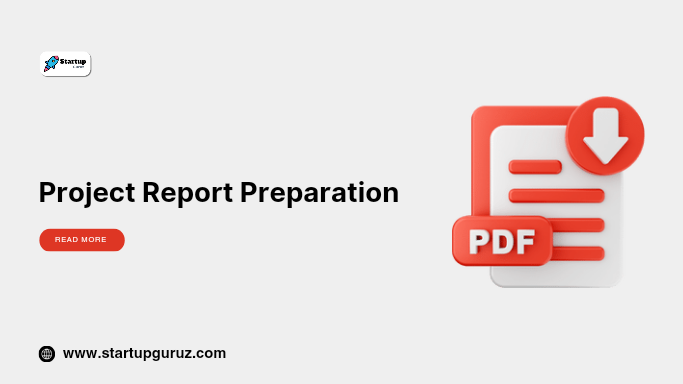Project Report Preparation
A Comprehensive Guide to Project Report Preparation
Project reports are essential documents that outline the objectives, strategies, and financial projections of a proposed business or initiative. They serve as roadmaps for entrepreneurs, investors, and stakeholders to evaluate the feasibility and success of a project. Whether you’re starting a new business or applying for funding, a well-prepared project report can significantly impact your outcomes.

Understanding the Purpose of a Project Report
A project report provides a detailed overview of a business proposal, including its goals, market analysis, financials, and implementation plans. It acts as:
- A Business Plan: Lays out the roadmap for executing a project effectively.
- A Financial Document: Helps in securing funding from banks or investors.
- A Performance Tracker: Serves as a reference to monitor progress and milestones.
Key Components of a Project Report
To prepare a comprehensive project report, you need to include the following sections:
1. Executive Summary
The executive summary is a concise overview of the project. It highlights the objectives, key features, and expected outcomes.
Example:
“This project aims to establish a solar panel manufacturing unit to meet the growing demand for renewable energy solutions.”
2. Business Overview
Provide details about the company, its mission, vision, and the team behind the project.
3. Project Objectives
Clearly state the goals of the project, such as profitability, market capture, or community benefits.
4. Market Analysis
Conduct an in-depth analysis of the market, competitors, and demand for the product or service. Include statistics and charts for better understanding.
5. Technical Feasibility
Detail the technical requirements of the project, including equipment, technology, and processes involved.
6. Financial Projections
Include detailed financial data such as:
- Startup costs
- Revenue projections
- Break-even analysis
- Profit and loss statements
7. Risk Assessment
Identify potential risks and propose mitigation strategies. This section shows preparedness and planning.
8. Implementation Plan
Provide a timeline of activities, milestones, and deadlines. Use Gantt charts or tables for clarity.
9. Social and Environmental Impact
Highlight how the project will positively impact society and the environment.
10. Supporting Documents
Attach licenses, permits, or any other required documentation to validate the project.
Steps to Prepare a Project Report
Step 1: Understand the Purpose
Determine why the project report is needed (e.g., funding, approval, or business planning).
Step 2: Research Thoroughly
Gather all necessary information about the market, competitors, financials, and legal requirements.
Step 3: Use a Structured Format
Divide the report into logical sections for better readability.
Step 4: Add Visuals
Include graphs, charts, and tables to make the report visually appealing.
Step 5: Proofread and Review
Ensure accuracy in data and language before submission.
Tips for Writing a Professional Project Report
- Keep It Concise: Avoid unnecessary jargon or lengthy explanations.
- Focus on Financials: Provide accurate and realistic projections.
- Use Clear Language: Ensure the report is easy to understand, even for non-experts.
- Include a Call to Action: Mention next steps or decisions required from the stakeholders.
Common Mistakes to Avoid in Project Report Preparation
- Incomplete Data: Ensure all necessary details are included.
- Over-Optimistic Projections: Avoid unrealistic financial or market expectations.
- Poor Formatting: Use a clean and professional layout for easy reading.
Project Report Example
Project Title
Setting Up a Dairy Farm with 20 Cows
Executive Summary
This project aims to establish a dairy farm to produce high-quality milk and dairy products for local and regional markets.
Market Analysis
The demand for organic and fresh dairy products is growing at 10% annually in the region.
Financial Projections
- Initial Investment: ₹10,00,000
- Annual Revenue: ₹15,00,000
- Profit Margin: 25%
Implementation Plan
The project will be executed in three phases: setup, production, and market expansion, over 12 months.
This example demonstrates the importance of structuring and including critical details in the report.
FAQs
1. What is a project report?
A project report is a formal document that outlines the feasibility, goals, and financial aspects of a project.
2. Why is a project report necessary?
It helps secure funding, acts as a business roadmap, and communicates project details to stakeholders.
3. What are the key elements of a project report?
Executive summary, market analysis, financials, technical feasibility, and implementation plans are crucial components.
4. How do I prepare a project report for a loan?
Focus on financial data, loan utilization, and repayment strategies. Tailor the report to the lender’s requirements.
5. Can I use templates for project reports?
Yes, templates provide a good starting point, but customize them to suit your specific project.
6. What tools can I use to prepare a project report?
Microsoft Excel, Word, Google Docs, and specialized software like Tally and QuickBooks are helpful.
7. How long should a project report be?
It depends on the complexity of the project but should be detailed yet concise, typically 10-30 pages.
8. What is the cost of preparing a project report?
Professional preparation can cost between ₹5,000 to ₹25,000, depending on complexity.
9. Who prepares project reports?
Consultants, chartered accountants, and financial advisors typically prepare professional project reports.
10. What is the difference between a project report and a business plan?
A business plan focuses on overall business strategies, while a project report emphasizes a specific project.